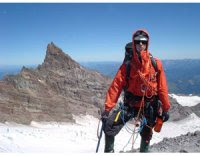My first crack at liveblogging...
Panelists from Why Tuesday and UpTake.
Why Tuesday
This organization is pushing for voting reform, trying to increase voter turnout by moving voting day from Tuesday to a weekend or making voting day a National Holiday.
Video helped legitimize and publicize their issue when they got some of the Presidential candidates on video discussing their own takes on voting reform.
UpTakeCitizen journalists covering their own local issues via video and audio. Examples shown include coverage of bike protestors in Minneapolis. Inclusion of citizen journalists into the protests humanized the formerly brutal response to the protests by local police.
Phil Noble asks (wow, I'm sitting next to Phil Noble): how do you rank the UGC you take in to quantify quality? (I'm thinking
OutBrain may be one answer he's looking for).
Jason Barnett of Uptake makes it very clear that the key to successful video is being authentic. They don't even censor curse words from the video that they publish.
TubeMogul.comWill automatically distribute your video to all of the major video sites. They will also report the stats back from all of these other sites (on their fee based model).
How to promote a user generated video contest:
- Build the frame
- Do some video of yourself (show what you want)
- Pick a date
- PR push for the event
- Seed the field with players
- Prizes don't work as incentives
Rapid response video has been used by sitting members to respond to issues. Subsequently MSM uses the video as part of their coverage.
Video can be repurposed on YouTube by updating the keywords so videos piggyback on the backs of other more popular videos. (This will only be ultimately successful if the video is actually related, since this is a common spam practice which is being cracked down on by YouTube.)
Filming Tips
- Stay away from hard drive cameras (mini-DV best)
- Mic is important (sound can be more important than picture)
- Write down questions and story line
- Do b-roll and background clips
- Face talking for 5 minutes is boring (spice up with related material)
Xacti Camera
HD model not great, but regular model can be good enough for decent video and passable sound
FreeVlog.org
Will walk you through all the information you need to get set up to take video. Free tools, equipment, tips, etc. Geared towards first time video producers.
Google "compression tips" to find out the best way to tailor video to YouTube posting.
Mogulus.com allows you to switch between remote live video feeds in a live video feed.
Labels: liveblog, phil noble, politics online, uptake, whytuesday
